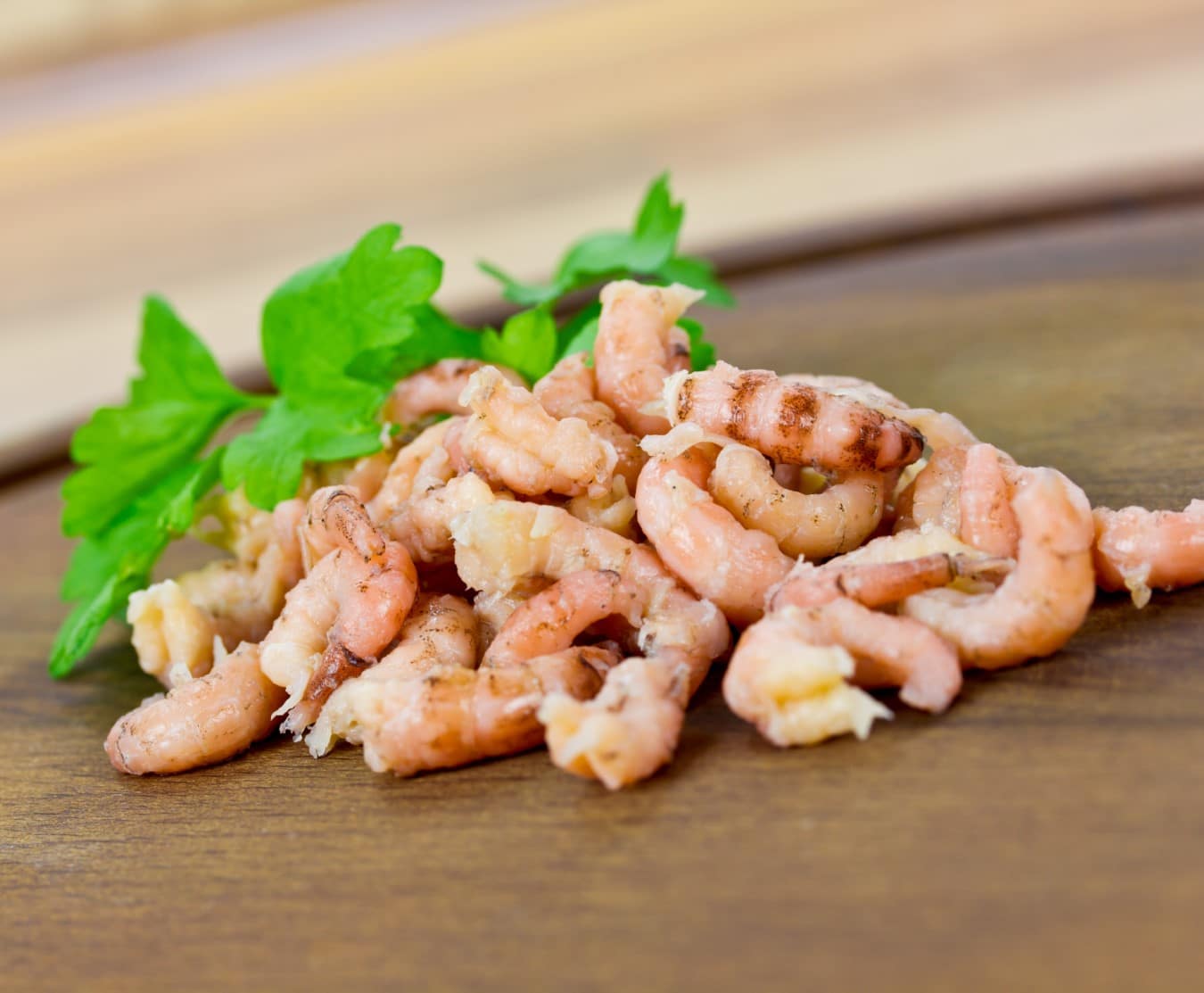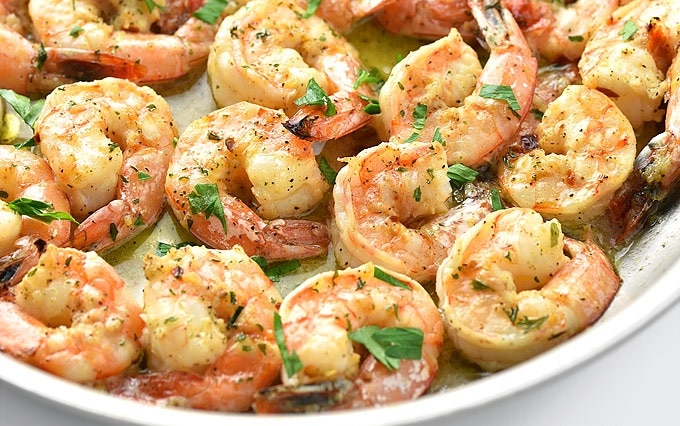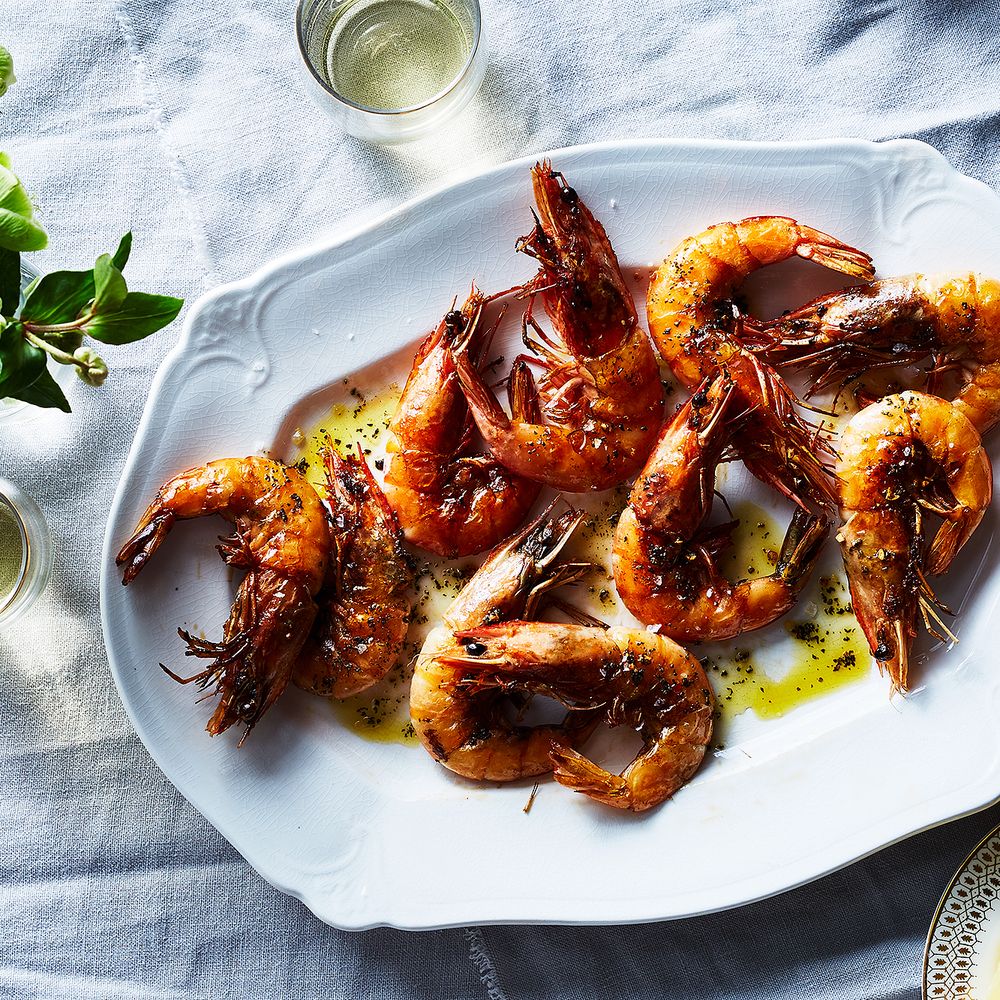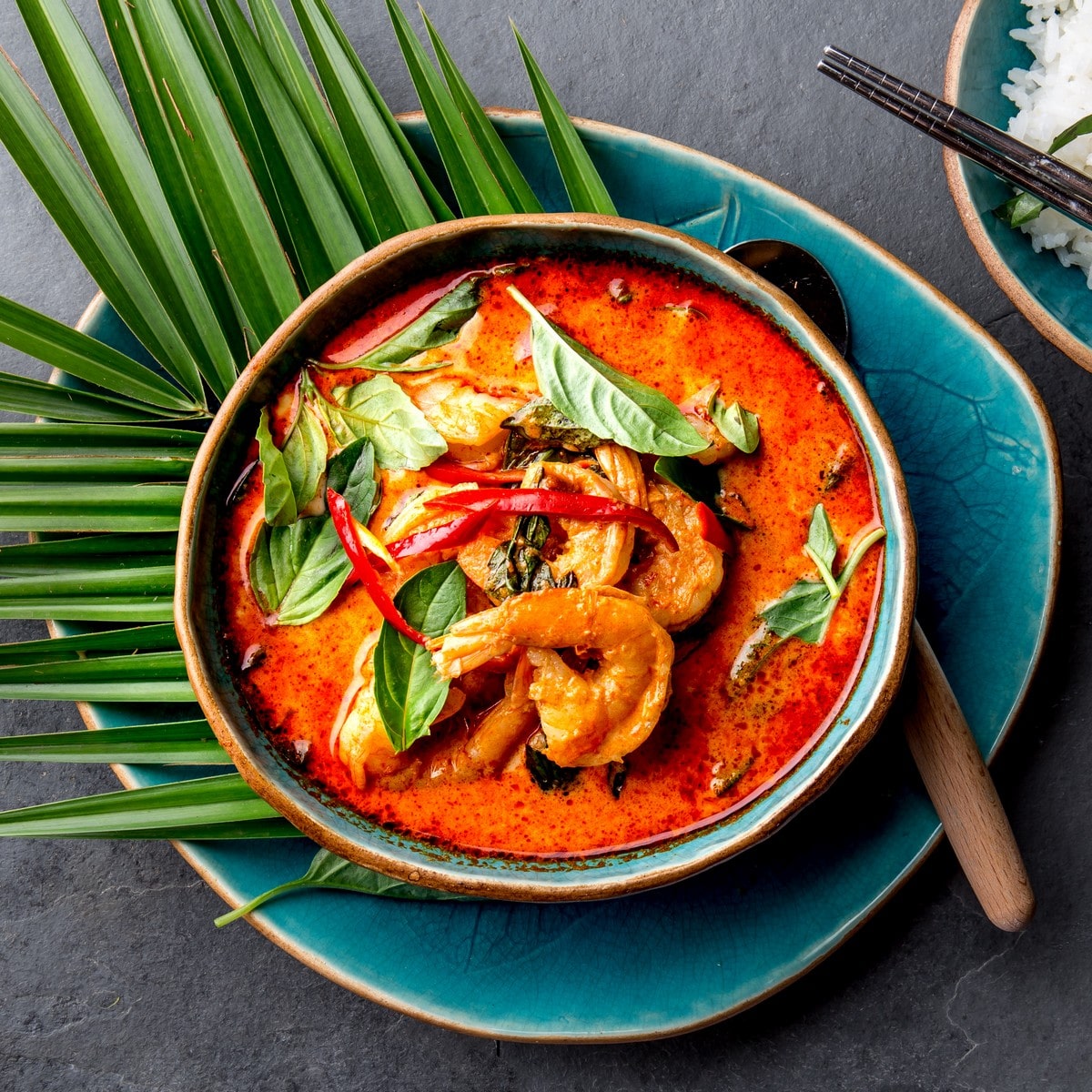
Introduction
Shrimp are a vital part of many marine and coastal ecosystems, providing food for numerous marine mammals, fishes and birds. In addition, they are crucial in the cycling of nutrients throughout the environment.
Shrimp is also an excellent source of seafood for cooks and diners around the globe. They are versatile and valuable to the aquatic environment, and their delicious qualities make them a hit with seafood lovers everywhere. Their adaptable nature makes them one of the most important commercial species sought by fisheries worldwide.
Description
Shrimp are small, aquatic crustaceans belonging to the suborder Pleocyemata and found in a vast array of marine, estuarine and coastal environments across the globe. Shrimp are incredibly adaptable from tropical to subarctic waters and can tolerate different temperatures and salinities. The Indo-Pacific and Caribbean seas are among shrimp’s most abundant and diverse habitats.
Common species of shrimp include the whiteleg shrimp (Penaeus vannamei), the banana prawn (Penaeus merguiensis), and the giant tiger prawn (Penaeus monodon). Other species include the brown shrimp (Crangon crangon), the blue velvet shrimp, the common European shrimp, and the spiny lobster (Panulirus versicolor). Amongst the warm-water shrimp, important species include Litopenaeus vannamei, Penaeus monodon, Macrobrachium rosenbergii, and Farfantepenaeus duorarum.
Physical Characteristics
Shrimp are small marine crustaceans found throughout the world. Generally, they are characterised by their long, slender, segmented abdomens and cylindrical bodies. On average, most shrimp species grow about 7 cm long, but some species may be much larger or smaller. Their elongated bodies can come in several colours, such as tan, red, orange, pink, and black.
Freshwater shrimp have a smooth exoskeleton with a carapace, five pairs of slender legs and antennules, and a sizeable distinctive tailfin. In addition, they have five simple eyes, two pairs of maxillipeds (mouthparts for feeding), and several sets of gills which help them breathe oxygen-rich water.
Some species may have spots or stripes along their carapace to blend in with their environment and avoid predators, while some have large spines used for defence.

Habitat
Shrimp are widely distributed internationally in coastal and open ocean habitats such as estuaries, bays, wetlands and coral reefs, and freshwater bodies such as lakes and rivers. They favour shallow waters with various vegetation types and substrates such as sand and mud.
Shrimp can survive in temperatures anywhere between 25-30C (77-86F) and have been known to thrive in highly saline environments, although they tend to avoid colder climates. They prefer areas of low water currents and nearby food sources, typically in brackish waters.
Distribution of Stocks
Shrimp are harvested via several methods, such as trawling, seine netting, and dipnetting, and are found in many products. Common fisheries for shrimp are located in the Atlantic and Pacific Oceans, the Caribbean, the Gulf of Mexico and the Mediterranean Sea.
Shrimp Fisheries
Shrimp fishing is an integral part of the global seafood industry, playing a vital role in global food security and providing a valuable food source and income to millions of people globally. Thousands of shrimp species are caught worldwide in coastal waters such as the Gulf of Mexico, the West Pacific and the North-East Atlantic. Shrimp fisheries are typically semi-industrial marine fisheries tailored to the needs of a commercial enterprise.
Aquaculture
Aquaculture cultivates aquatic organisms and plants, such as fish, shellfish, farmed shrimp, crustaceans and aquatic plants, for food, sport, or commercial purposes. This practice has been around for centuries and has significantly impacted human history.
Aquaculture involves managing, husbanding, and manipulating numerous organisms in different environments, from freshwater or seawater to artificial or natural systems. Aquaculture is now an essential part of the global food economy.
Sustainable Shrimp Farming and Harvesting
Shrimp is one of the world’s most widely consumed seafood items today, yet unsustainable farming and harvesting practices can devastate wild shrimp populations. Individuals and organisations across the aquaculture industry must adopt and practice sustainable shrimp farming and harvesting methods to safeguard these populations.
Sustainable aquaculture and fishing practices are essential for the health and well-being of shrimp populations and their respective ecosystems. Trained fishers use approved gear and mitigative measures, such as continuous monitoring of shrimp populations, creating artificial habitats to enhance natural habitats, and using organic aquaculture feeds and fertilisers.
To protect wild shrimp and the resources associated with them, resource management agencies, governments and industry organisations must coordinate their efforts to set and maintain sustainability standards. Such standards include monitoring shrimp population health regularly, applying restrictions to prevent overfishing, reducing bycatch, and developing sustainable sourcing initiatives.
Life Cycle of Shrimps
The life cycle of a shrimp typically begins with the female depositing her fertilised eggs in the water, which will then hatch into larvae. This planktonic form will undergo several developmental moulting stages before they reach the juvenile stage and are close to adult size in two to eight weeks. At this stage, the shrimp has reached its adult size but cannot yet reproduce.
Once the shrimp has reached adulthood, it can reproduce by either mating or producing eggs and fertilising them outside their bodies. Following reproduction, the adults die, and the eggs are dispersed in the environment, where they will eventually hatch and begin the life cycle anew.

Shrimp’s Diet
Shrimp use their antennae to search for food sources, and they feed on different types of foods depending on what is available in their environment. Aquatic plants, organic materials, zooplankton, and decaying seafloor materials can all be included in this category.
In captivity, shrimp are usually fed on processed food pellets and flakes that are commercially available.
Giant tiger prawns are predatorily in nature and feed on larger prey such as small fish, little shrimp and invertebrates. They are also opportunistic scavengers and will take advantage of dead animals on the sea floor.
Spawning and Reproduction
Shrimp mate through external fertilisation, where the female will release a pheromone to attract males during the spawning season. The eggs are shed in a gelatinous mass and then sink to the bottom of the ocean, where they hatch into larvae which then go through several moulting stages before they reach adulthood.
Shrimp populations are regulated by density-dependent mortality, predation, competition between other species for resources, and environmental factors such as water temperature, salinity and surface sediment properties.
Importance in Fisheries
Shrimp is a notable species in marine and brackish-water fisheries, providing food and revenue to coastal countries worldwide. Its economic worth has led to intense efforts to improve farming techniques for higher productivity, such as selective breeding, genetic manipulation, cost-effective feed development and evaluation of environmental characteristics of shrimp-producing systems.
Nutritional Values
Shrimp are a nutritionally-dense food, low in calories and fat and high in protein, essential amino acids and various vitamins and minerals such as iron, magnesium, and selenium, as well as Vitamins A and B12.
In addition, shrimp are also a source of beneficial omega-3 fatty acids, which have been linked to reducing inflammation, improving heart health, aiding in weight loss and reducing the risk of certain chronic diseases when consumed in moderation.
Benefits
Shrimp is a highly nutritious human protein source, containing all essential amino acids and high concentrations of minerals, vitamins, and other fatty acids. Its taste, texture, and affordability have made it increasingly popular in some areas of the world, leading the shrimp industry to grow and evolve.
Shrimp is an excellent source of protein, low in saturated fat and cholesterol, and praised for its sweet taste and delightful texture. Its versatility extends to cooking methods, as it can be stir-fried, deep-fried, boiled, grilled and baked.
Taste and Texture
Shrimp is a mild and sought-after type of seafood enjoyed by many for its delicate flavour. It generally has a mild taste with a hint of sweetness and a slight, briny saltiness, yet the flavour can vary greatly depending on the species and origin and the cooking method used.
To enhance the taste, you can add herbs, spices, marinades, or sauces while cooking. Popular cooking methods include grilling, steaming, boiling, and frying, yielding different textures and intensifying the flavour.
Cooking Shrimps
Because of its mild flavour and delicate texture, shrimp is often served with more daring dishes, such as garlic bread or a spicy sauce. These dishes allow the shrimp flavour to complement the bold-tasting components while not overpowering them. Shrimp is incredibly versatile and can be used in several recipes: as an appetiser, incorporated into salads, or used as an ingredient in soups and main dishes.
With creative cooking techniques and the right ingredients, shrimp can be an incredibly delicious meal. Its delicate flavour and subtle sweetness can be an unexpected treat when added to main dishes, offering a thoughtful balance to bold tastes.
Boiling: the simplest way to cook shrimp
The most common way to cook shrimp is by boiling them. The shrimp should be added to a pot of salted boiling water and cooked for approximately 2-4 minutes or until the flesh has turned pink and opaque. A food thermometer can be used to measure the temperature of the shrimp, as they are cooked between 145°F to 165°F. Different herbs and spices can be added to the water for added flavour. Once cooked, the shrimp should be drained and served.
Grilling: adding a unique flavour
Grilling shrimp is another popular way to cook them. To do this, the shrimp should be brushed with butter or oil and seasonings and then cooked on high heat on the grill. The shrimp should be turned frequently to ensure even cooking. Avoid overcooking the shrimp to prevent them from becoming tough and rubbery.

Frying: crispy and golden
Frying shrimp is an easy and convenient way to cook them. Before adding to a pan, the oil should be hot enough to ensure even cooking. The shrimp should become golden brown and crispy once done. Be sure to monitor the heat and remove the shrimp from the heat when ready, as overcooking may lead to a drier texture.
Baking: the healthiest way to prepare shrimp
Baking is a great way to make shrimp and is generally considered the healthiest way to prepare them. Before cooking, season the shrimp with herbs and spices and place them onto a foil-lined baking tray. The shrimp must be observed to ensure they are cooked appropriately, as they can lose moisture and texture quickly.
Sauteing: bringing in extra flavour
Sauteing is an ideal way to add extra flavour to your shrimp dish. Ensure even cooking by cooking the shrimp on low- to medium heat and stirring constantly. Herbs, spices, and liquids like olive oil and lemon juice can be added for extra flavour. To retain their tenderness and moisture, it is essential to cook the shrimp sparingly.
Pairing Shrimp with Side Dishes
Shrimp is a versatile seafood dish that can be deliciously paired with all kinds of side dishes. Whether it be vegetables, starches, salads, sauces, herbs and spices, or crunchy extras, the right combination can create a unique and balanced dish that will entice any pallet.
- Vegetables – Lightly roasted or stir-fried greens such as green beans, kale, asparagus, broccoli, zucchini, squash, mushrooms, Brussels sprouts, and bell peppers are popular accompaniments to shrimp dishes, as they provide both flavour and nutrition. For something different, okra, artichoke hearts, kohlrabi, and cauliflower make excellent flavour and texture pairings.
- Starches – Starches can be prepared in many ways to create a perfect side, such as potatoes, pasta, rice, couscous, polenta, grits, and quinoa. They can be prepared creamy and cheesy, roasted and lightly oiled, or boiled and served in a chilled potato salad.
- Salads – A light dressing works well when mixed with shrimp and vegetables, while Caesar and Greek salads offer a nutty flavour to complement the seafood pleasantly.
Sauces, Herbs and Spices
Adding aromatic herbs and spices, such as basil and parsley, is a great way to bring out the flavour of the shrimp. Spices such as lemon pepper, garlic, cumin, smoked paprika, oregano, red pepper flakes, cayenne pepper, turmeric, and ginger can add more depth of flavour.
Zesty sauces like citrus, teriyaki, garlic butter, and aioli can also add a delightful kick.
Seasonings and sauces, such as garlic butter, lemon-garlic, or mango chilli, are also available to enhance the taste of cooked shrimp. These accompaniments allow the shrimp’s subtle sweetness to shine without overpowering the other flavours.
Popular Recipes
Shrimp is used in various recipes, from appetisers to entrees. Popular shrimp recipes include garlic butter shrimp, spicy fried rice, creamy shrimp and corn chowder, jambalaya, shrimp scampi, and coconut shrimp.
Shrimp can also be added to tacos, wraps, salads, and top pizza. It is often battered and deep-fried and served with a variety of sauces.
Other familiar recipes featuring shrimp include crispy garlic lemon shrimp, shrimp tacos al pastor, and spicy shrimp and artichoke cabbage slaw. Seafood gumbo is a popular shrimp dish typically served with white rice.
Conclusion
Shrimp are a fascinating species with immense biodiversity, making them one of the most successful groups of organisms in the ocean. Their resilient and adaptable nature and their evolutionary advantage ensure their continued importance in maintaining marine ecosystems’ overall health and stability. Shrimps have long been prized in many cultures and are commonly featured on menus worldwide.



